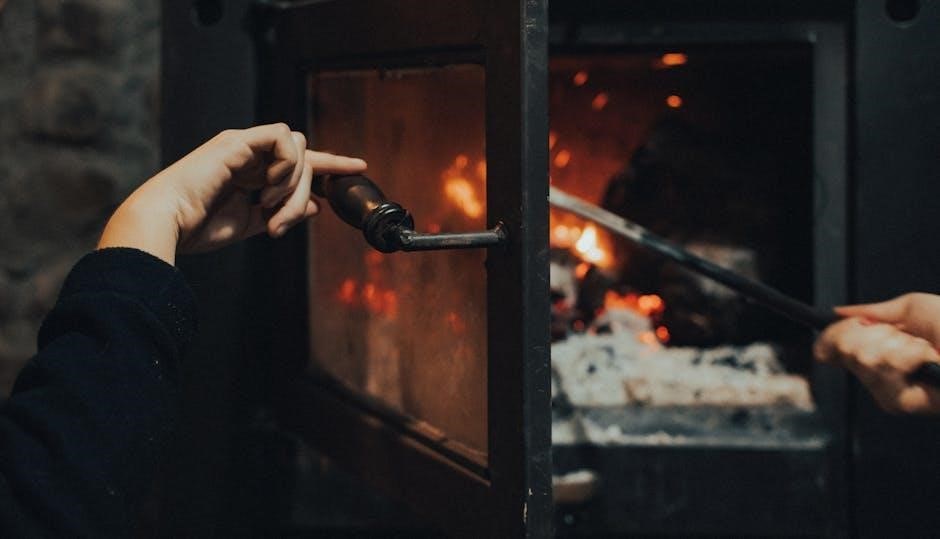A fall home maintenance checklist ensures your property is prepared for colder weather. It includes tasks like inspecting gutters, checking HVAC systems, and yard preparation to prevent costly repairs and ensure safety.
- Inspect gutters and downspouts for blockages.
- Check HVAC systems for efficiency.
- Prepare yards and landscaping for winter.
- Ensure windows and doors are sealed.
Why Fall Maintenance is Crucial
Fall maintenance is essential for protecting your home from potential damage caused by harsh winter conditions. Regular inspections and repairs during this season can prevent costly issues, such as water damage from clogged gutters or roof leaks, and ensure your home remains energy-efficient. By addressing tasks like cleaning gutters, inspecting the roof, and preparing HVAC systems, you can avoid unexpected breakdowns and save on energy bills. Additionally, fall maintenance helps maintain your home’s curb appeal and structural integrity, preventing long-term deterioration. It also focuses on safety, such as checking smoke detectors and ensuring proper ventilation. Proactive fall maintenance not only safeguards your investment but also provides peace of mind as colder weather approaches.
- Prevents damage from rain and ice.
- Saves on energy bills.
- Avoids costly repairs.
- Ensures safety and preparedness.

Exterior Home Maintenance
Exterior home maintenance in fall involves inspecting siding, checking for cracks, and cleaning windows. It also includes preparing your yard by raking leaves and aerating the lawn to ensure it stays healthy.
- Inspect siding for damage.
- Check windows for proper sealing.
- Prepare yard for winter.
- Ensure outdoor spaces are clean.
Gutters and Downspouts
Clearing gutters and downspouts is essential to ensure proper water flow and prevent damage to your home’s foundation. Remove leaves, debris, and dirt that may have accumulated during summer and spring. Use gloves and a ladder to safely scoop out material, then flush the system with water to check for blockages. Inspect for sagging gutters and tighten loose brackets to maintain proper alignment. Ensure downspouts are directed away from the house to avoid water pooling near the foundation, which can lead to erosion or basement flooding. Consider installing gutter guards to reduce future maintenance. After cleaning, inspect the gutters and downspouts for any cracks or holes and repair them promptly to prevent leaks during winter. Proper maintenance now will help protect your home from water-related issues and ice dams during colder months.
Roof Inspection and Repair
A thorough roof inspection is crucial to identify and address potential issues before winter. Start by checking for damaged, missing, or loose shingles, which can allow water to seep into your home. Inspect the flashing around vents, chimneys, and skylights to ensure they are tightly sealed. Look for signs of wear or gaps that could let in moisture. Clear debris like leaves or branches that may have accumulated on the roof, as these can cause damage or create habitats for pests. Trim tree branches near the roof to prevent scratching or damage from falling limbs. Check the condition of roof vents to ensure proper ventilation, which helps prevent ice dams and reduces energy costs. If you notice any issues, repair them promptly or contact a professional to avoid costly repairs later. Regular roof maintenance can extend its lifespan and protect your home from winter weather.
Windows and Door Maintenance
Inspecting and maintaining windows and doors is essential to ensure energy efficiency and prevent cold air infiltration. Start by checking for cracks or gaps in the frames and seals. Replace any damaged weatherstripping or caulk to keep warmth in and drafts out. Clean window screens and replace them with storm windows if necessary. Lubricate door hinges and locks to ensure smooth operation. For sliding doors, check the tracks and clear any debris that might cause sticking. Inspect door sweeps or thresholds for wear and replace them if they no longer seal properly. Additionally, consider installing door sweeps or draft stoppers at the base of doors for extra protection against cold air. Proper maintenance of windows and doors can significantly reduce heat loss and lower energy bills during the winter months. Regular checks and timely repairs will help maintain comfort and prevent more costly issues later.

Interior Home Maintenance
Inspect HVAC systems, plumbing, and electrical connections to ensure efficiency and safety. Clean or replace air filters, check for leaks, and prepare your home’s interior for colder months ahead with these essential checks.
HVAC System Preparation
Preparing your HVAC system for fall is crucial to ensure it runs efficiently during colder months. Start by inspecting and replacing air filters to improve air quality and reduce energy consumption. Check for any leaks in ducts and seal them to prevent heat loss. Schedule a professional inspection to ensure your heating system is in good condition. Additionally, consider installing a programmable thermostat to regulate temperatures when you’re not home, saving on energy bills. Clean the area around your furnace or heat pump to ensure proper airflow and safety. Finally, test your system by running it before the weather gets cold to identify any issues early. Proper HVAC preparation will keep your home warm and comfortable throughout the fall and winter seasons.
Plumbing and Water Systems
Fall is an ideal time to inspect and prepare your plumbing and water systems for colder weather. Start by draining and storing outdoor hoses to prevent freezing and damage to faucets. Inspect exposed pipes in unheated areas like the garage, basement, or crawlspace, and wrap them with insulation or heat tape to protect them from freezing temperatures. Check for leaks under sinks, around toilets, and near water heaters, addressing any issues promptly to avoid costly repairs. Drain sediment from water heaters to ensure efficiency and longevity. Additionally, inspect your home’s water pressure to identify potential issues before they escalate. Finally, consider installing freeze-proof faucets or frost-proof spigots for added protection. By addressing plumbing concerns in the fall, you can prevent winter-related damage and ensure your water systems function smoothly throughout the colder months.

Yard and Landscaping Maintenance
Fall yard maintenance involves aerating lawns, applying fertilizer, and raking leaves. Trim dead branches, clear debris, and prepare plants for winter. Drain hoses and secure outdoor furniture to protect from harsh weather conditions.
Lawn Care
Fall lawn care is essential to ensure a healthy lawn come spring. Start by aerating the soil to improve air, water, and nutrient circulation. Apply a fall fertilizer rich in phosphorus to promote root growth. Overseed any bald patches to fill in thin areas. Rake leaves regularly to prevent them from smothering the grass. Use a mulching mower to break down leaves and add nutrients to the soil. Maintain your mower at the correct height to protect the grass from frost damage. Finally, water the lawn deeply but infrequently to encourage deep root development. Proper fall lawn care sets the foundation for a lush, green lawn in the spring.
Tree and Shrub Maintenance
Fall is the ideal time to inspect and maintain trees and shrubs. Trim dead or diseased branches to prevent damage from snow and ice. Prune trees to improve airflow and reduce the risk of storm damage. Fertilize shrubs with a balanced fertilizer to prepare them for winter. Mulch around the base of plants to retain moisture and regulate soil temperature. Remove leaves from shrub beds to prevent rot and disease. Inspect tree trunks for signs of pests or cracks, addressing issues promptly to prevent further damage. Consider applying anti-desiccant sprays to protect evergreen shrubs from winter dryness. Proper maintenance now ensures healthy growth and vibrant appearance come spring.

Safety and Emergency Preparedness
Ensure smoke and carbon monoxide detectors are functional by replacing batteries. Inspect fire extinguishers and emergency exits. Prepare a winter emergency kit with flashlights, first aid supplies, and warm blankets.
- Test detectors monthly.
- Update emergency contact lists.
Check and Replace Smoke Detector Batteries
Checking and replacing smoke detector batteries is a critical part of fall home maintenance. Smoke detectors are essential for early fire detection, saving lives and preventing property damage. Test each detector monthly by pressing the test button. If a detector is not working, replace the battery immediately. Use high-quality batteries to ensure reliability. Additionally, inspect the detectors for dust or debris, which can impair their function. Vacuum them gently to maintain their efficiency. Remember to replace batteries twice a year, often during seasonal changes like fall and spring. This simple task can provide peace of mind and ensure your home remains safe throughout the winter months.
- Test detectors monthly.
- Replace batteries annually or when low.
- Clean detectors to remove dust.
